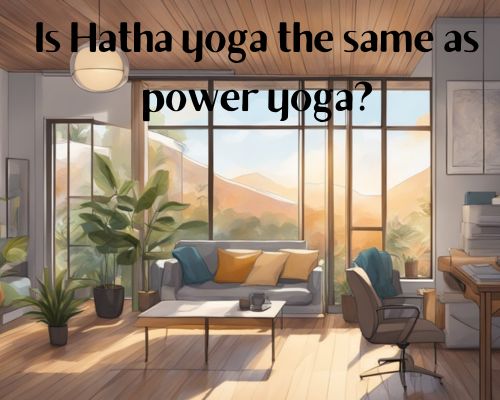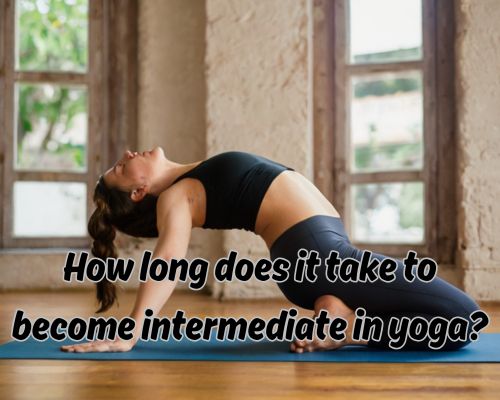Is Hatha Yoga the Same as Power Yoga? Exploring the Differences
When exploring the diverse world of yoga, two prominent styles often discussed are Hatha and Power yoga.
Hatha yoga and Power yoga are not the same. Each embodies a distinct approach to the practice of yoga.
Hatha yoga is traditionally recognised for its gentle, slower-paced style. It focuses on mastering postures, known as asanas, and incorporating breathing techniques, or pranayama. It is a practice that guides individuals towards mindfulness and meditation, aiming to foster a balanced connection between body and mind.

On the flip side, Power yoga is noted for its vigorous and dynamic nature, drawing inspiration from the Ashtanga practice.
It offers a fast-paced flow that enhances strength and flexibility. This style appeals to those seeking a more physically demanding experience, combining intense movements with the foundational elements of yoga. Power yoga challenges practitioners by encouraging them to move swiftly from one pose to another.
Understanding the differences between Hatha yoga and Power yoga offers valuable insights into choosing the practice that aligns best with personal goals and lifestyle.
Whether one wishes to cultivate inner peace through meditation or develop physical strength and endurance, both styles hold unique benefits within the broader spectrum of yoga.
Understanding Hatha Yoga
Hatha Yoga serves as a foundational practice introducing individuals to yoga’s physical and mental disciplines, see https://bikramyogamornington.com.au/.
It emphasises precision in poses, controlled breathing, and mindfulness, fostering both physical flexibility and mental relaxation.
Key Components of Hatha Yoga
Hatha Yoga centres on balancing the energies in the body through asanas (postures) and pranayama (breathing techniques).
These elements aim to prepare the practitioner for deeper practices of meditation. Alignment and precision in poses are vital, encouraging better posture and body awareness.
A typical Hatha session focuses on holding poses for longer durations, aiding concentration and enhancing body flexibility.
This practice nurtures relaxation and mindfulness, promoting a harmonious union of body and mind.
Physical Postures and Their Benefits
The asanas in Hatha Yoga are designed to stretch and strengthen the body.
Each pose, or asana, is performed with particular attention to alignment, enhancing flexibility and muscular endurance. Regular practice can improve posture and promote better balance.
Benefits extend beyond physical fitness. These postures help in tension release, providing relief from stress. The precision of poses contributes to a deeper sense of mindfulness, allowing practitioners, see https://bikramyogamornington.com.au/, to develop a greater connection with their body.
Role of Breathing Techniques in Hatha Yoga
Pranayama, or the control of breath, is integral to Hatha Yoga.
Techniques like Nadi Shodhana and Ujjayi breathing help regulate the breath, contributing to a state of calm and focus.
Practitioners learn to breathe deeply and evenly, which supports stress reduction and relaxation.
These controlled breathing exercises enhance lung capacity and improve oxygen circulation. By integrating pranayama with physical postures, Hatha Yoga provides a holistic approach to wellness, fostering both mental clarity and physical health.
Exploring Power Yoga
Power Yoga, often equated with Vinyasa Yoga, is a dynamic practice celebrated for its intensity and ability to enhance physical fitness.
It is anchored in fluid movements that cultivate strength, draw from Ashtanga Yoga principles, and significantly impact muscle tone. Practitioners often experience increased energy and endorphin levels, with benefits extending to mental wellness.
Power Yoga’s Foundations
Power Yoga stems from the principles of Vinyasa, emphasising a sequence of movements connected through breath.
While influenced by traditional Ashtanga Yoga, it diverges by offering practitioners more flexibility in terms of posture variations and class structure.
This modern interpretation means that sessions can be tailored to target specific outcomes like endurance or relaxation, depending on the instructor’s focus and students’ needs.
Intensity and Athletic Focus
Unlike gentler forms like Hatha Yoga, Power Yoga is renowned for its vigorous sequences that cater to individuals interested in an athletic challenge.
The practice often takes place in heated environments, enhancing both flexibility and calorie burn. This intense focus attracts athletes and those seeking rigorous strength training while providing a comprehensive cardiovascular workout, boosting energy levels significantly.
Impact on Muscle Tone and Fitness
Through continuous, dynamic movements, Power Yoga promotes muscle building and toning. The regular practice of this yoga style helps in sculpting lean muscles while increasing overall strength.
Its emphasis on flexibility, core strength, and balance supports athletic performance across various sports. Moreover, the physical exertion involved releases endorphins, which can aid in managing symptoms of depression and anxiety.

